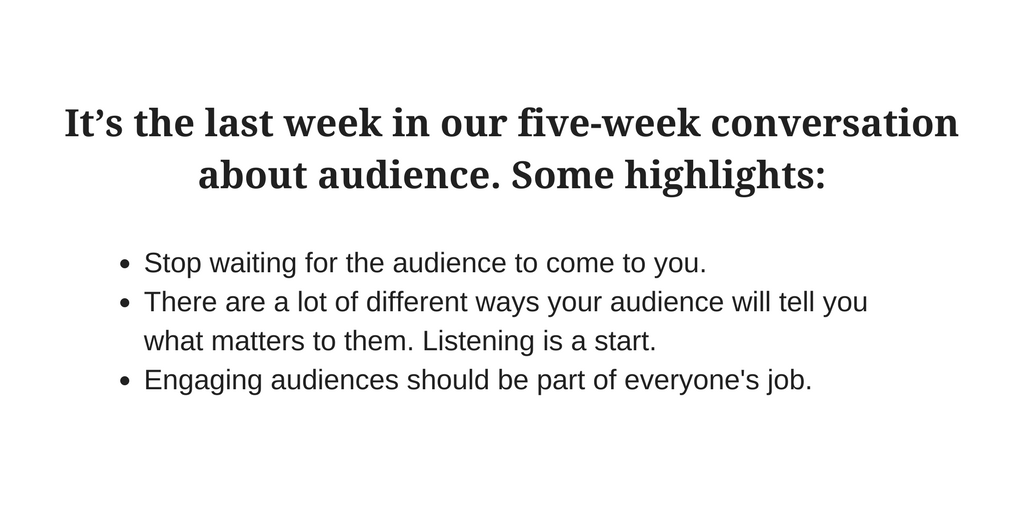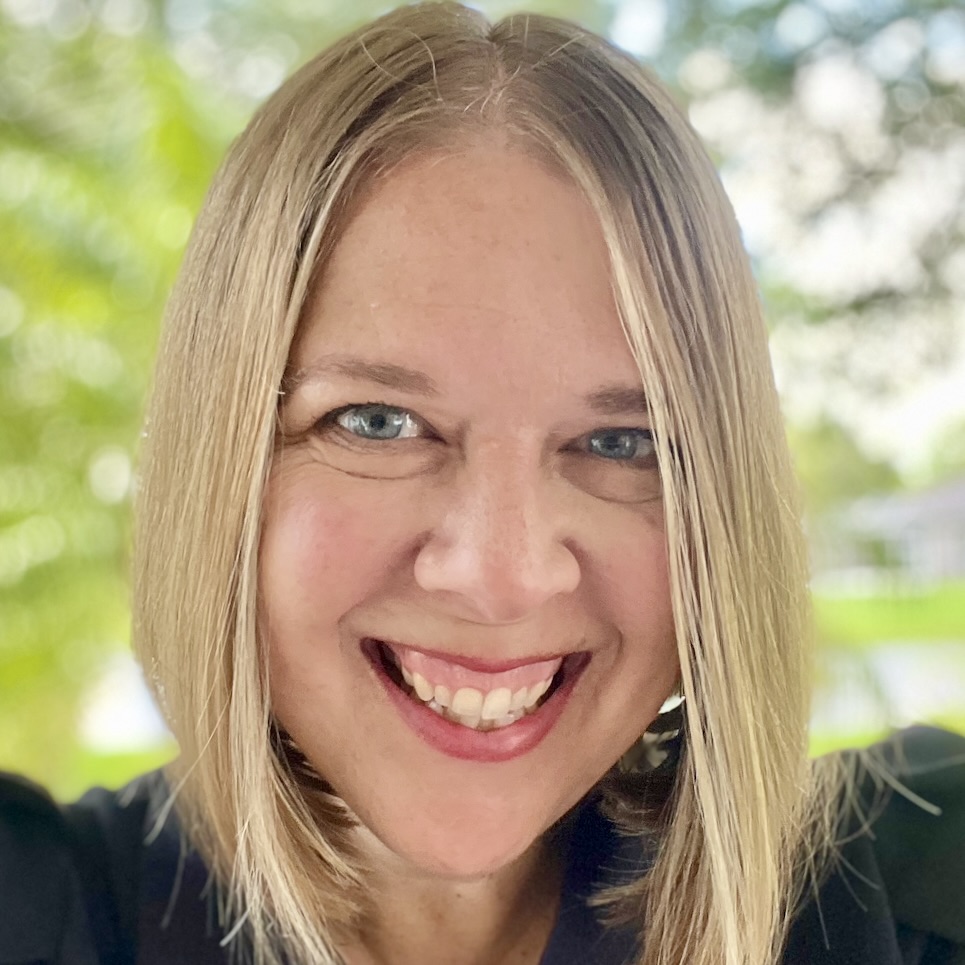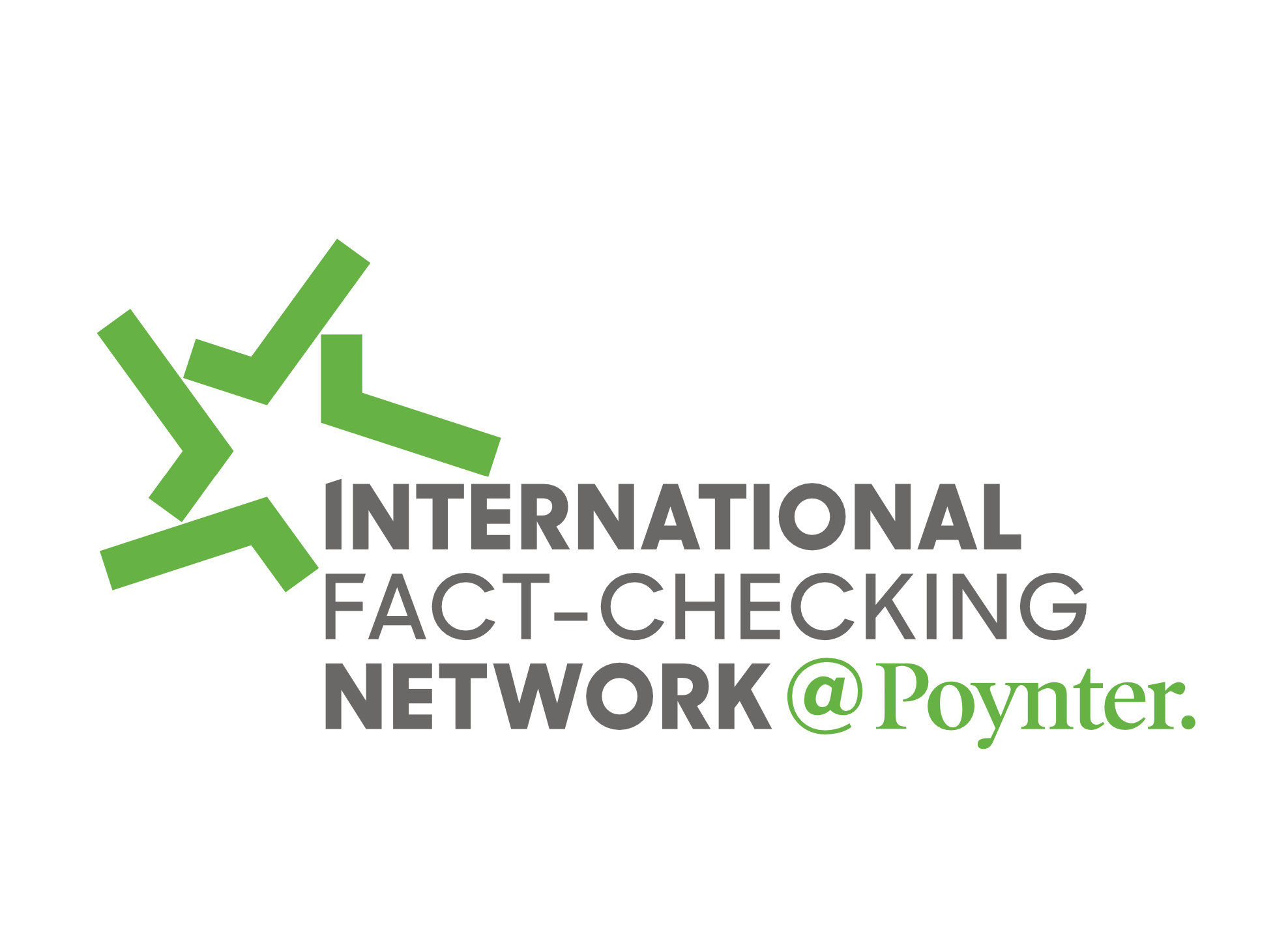This piece originally appeared in Local Edition, our newsletter following the digital transformation of local news. Want to be part of the conversation? You can sign up here.

We’ve been talking about listening to communities for the last four weeks. We’ve heard from journalists in big and small newsrooms around the country, a boss and someone who gets communities together for dinner and discussion.
Normally, this is the week where I’d try and wrap it all up with some big takeaways.
Then, I got this email from Taylor Shaw. Taylor’s a digital executive producer at KSHB in Kansas City, and we bonded earlier this year at Poynter’s Leadership Academy for Women in Digital Media over life and work in Northwest Missouri.
Related Training: How to Build and Engage Your Audience: Taking a New Approach with Analytics
Taylor had ideas. Lots of ideas. And I thought, you know, since we’re talking about listening to the community, maybe I should follow that advice.
So this week, instead of our usual wrap-up from me, you’re getting it from Taylor.

Hi Kristen,
My Sunday mornings are spent reading “saved” posts on Facebook. I collect them during the week.
One them was a piece you wrote: Local Edition: Do the best ideas come from inside the newsroom?
After reading the interview, something inside of me told me to send an email.
This is me articulating my thoughts.
The simple answer to this question is…
No, of course not!
Newsrooms cannot do this alone. We can’t sit around a table each morning and come up with content that will inform and engage our community.
We need help.
We should use our audience to help guide our decision-making process instead of using the perspectives of people with a “seat at the table” to decide.
Ashley Alvarado said it best.
“Anytime we’re asking community members to trust us or listen to us, we have to be willing to do that, too.”
I’ve read quite a few stories on digital innovation with citations from newspapers, public radio stations or larger/national news organizations.
They aren’t the only ones “doing digital.”
Local television stations are, too. I often feel like our digital perspective is overlooked.
My perspective on audience from a digital person working at a TV station:
Most stations do not have an audience engagement editor or community engagement producer.
At these shops, digital producers do it all: monitor audience engagement, write breaking news stories/alerts, copy edit, create multimedia content, produce video for the Facebook, decide homepage story placement, gauge analytics and plan online news coverage… I could go on.
Not to mention preaching the good gospel of “Everything that works on TV does not work on digital platforms.”
I say this to say we have a lot on our plate. The size of digital teams varies at each news station. My first TV station had three digital producers. My current station has six. Some stations also have line producers or the assignment desk handling digital needs for the site.
Other stations believe that digital platforms should be used as a tool to push audiences to watch TV.
Nope. It shouldn’t be like that. We call that “recruit to view.” Instead, digital platforms can help make decisions for TV. Audience engagement can help with that.
In many TV newsrooms, the people sitting at the morning meeting decide what will go on TV. News managers, producers and reporters think about their target demographic and what they would like to see or would be most interested in. Some stations also have content filters or a brand statement they use to decide stories for the newscast.
The audience is only consulted when they reach out to a reporter with a story tip, call the assignment desk with the scoop, if they post on social media channels or send an email.
In these instances, the audience is coming to us instead of the other way around.
The audience should guide our decision-making process from the very beginning.
Each morning, I give a digital report on how stories are performing online and trending topics. This is a way for the newsroom to get an idea of how our audience reacts to our content. I try to tie it in with the content filters for TV. I also share feedback that we received from social media posts. Some of our consumers will post story leads or have interesting points for us to dig deeper into.
It’s a start.
Here are some thoughts on how local news stations can use the audience:
- It needs to be a part of the newsroom strategy, not just the digital team. Everyone plays a role.
- Hold town halls (in person or on Facebook Live), community events, Reddit AMAs, “office hours” with anchors or news directors — spread the word on TV or digital platforms.
- Make a conscious effort to include the audience in your storytelling, more than “I just received a tip from a viewer on Facebook” or “A neighborhood Facebook group is chatting about __.”
- Read social media comments/ask questions and respond to messages/posts.
- Conversations could go offline or to email.
- Host regular chats on Facebook Live with local public figures from the station’s main page.
- Anchors “cold” call people in the area — pick a random number from a database and strike up a brief conversation.
- Create Facebook groups around franchise content or investigative series. A member of the newsroom can serve as the moderator.
This is a starter list. I’m sure I’ll think of more. Most importantly, it’s about creating a community around content.
Thank you for covering this topic. It allowed me to jot my thoughts down. It also gave me ideas to suggest/implement at my news station.
Thank you, Taylor!
We’ve started down this windy path by exploring what journalists need to start and stop doing. From both, three things bubbled up: Culture, audience and acquiring new skills. For our next discussion, we’re going to spend some time digging into a few questions: How do we figure out the skills we need now? How do we start to build them (especially for those who are doing more with less?) (So, everyone.) And how do we help spread those skills in our own newsrooms?
Next week, we’ll be talking with André Natta, at Birmingham’s WBHM and headed for a John S. Knight Journalism Fellowship, and Coburn Dukehart, digital and multimedia director at the Wisconsin Center for Investigative Journalism.
In the meantime, you can put your ear to the ground and hear stories from the community at this park in Calgary (this could be a cool idea for newsrooms to steal.) Gather is coming together. And check out this free Webinar from Poynter’s News University on using analytics to build audience.
See you next week!







